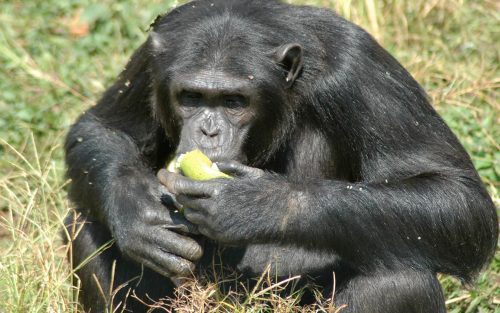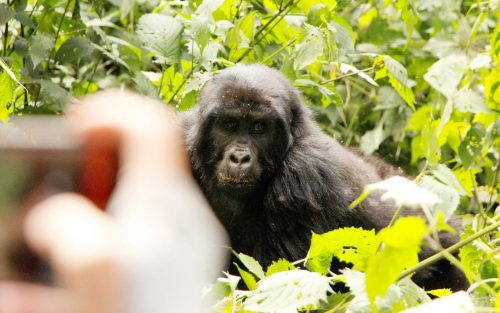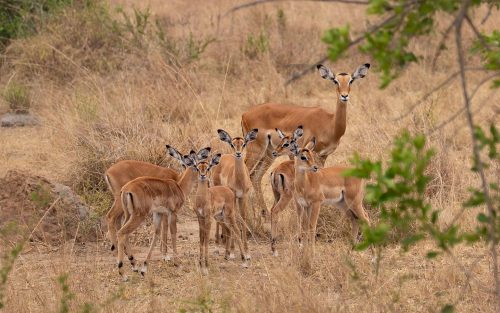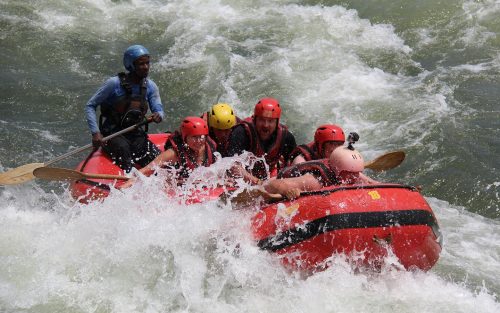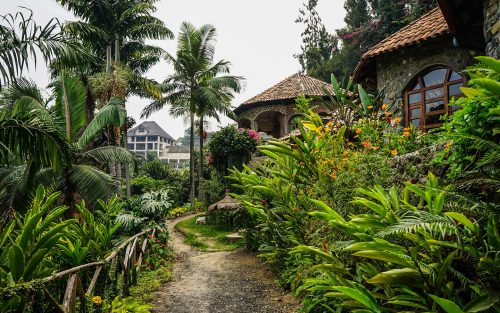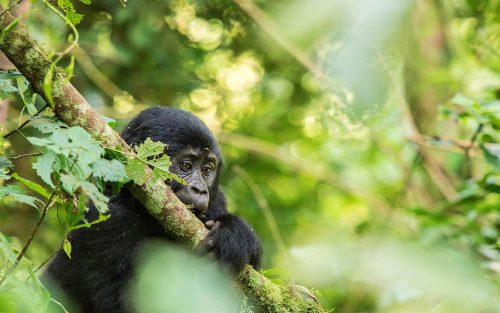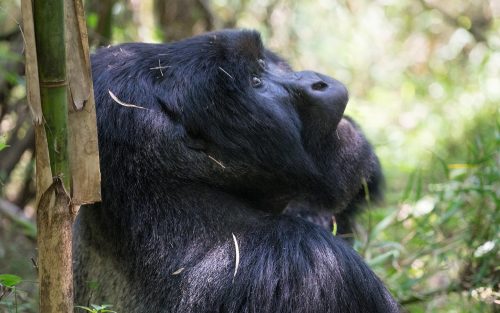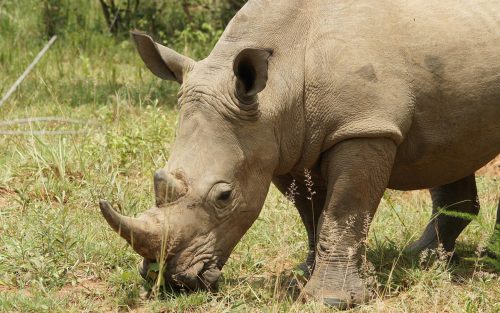RWONZORI MOUNTAINS
Home / Destinations /Rwenzori Mountains National Park “Mountains of the Moon”
Elevation: 5,100 meters
Size: 1,000 Sq. Km
The Rwenzori Mountains National Park is a Ugandan UNESCO World Heritage Site located in the Rwenzori Mountains. With almost 1,000 km² in size, the park has Africa’s third-highest mountain ranges. As early as 150 AD, in Alexandria Egypt, philosopher Claudius Ptolemy wrote of a snow-capped Mountain Range deep in the world’s longest river-The Nile and called it “The Mountains of the Moon”. In 1991, Rwenzori Mountains was gazetted as a National Park and is both a World Heritage and RAMSAR Site.
The Rwenzori Mountains National Park is one of Uganda’s least explored and undiscovered places with unbeaten tracks for adventure travellers. The park is dotted with waterfalls, lakes, and glaciers. Also known as the Rain Maker, The Rwenzori Mountains National Park has a reputation for being very wet and muddy, with often slippery trails. A variety of large mammals inhabit the lower slopes through the ranges are notable for a wide variety of vegetation, notably, are its five distinctive vegetation zones; Montane Forest, Bamboo Fores, Tree Heath-Bog, Hagenia-Rapanea scrub and Afro-Alpine Moorland.
These mountain ranges are estimated to have been formed 3 million years ago. While they are not volcanic, these mountains are a result of uplifted blocks of crystalline rocks such as gneiss, quartzite, amphibolite, and granite. This uplift resulted in the division of Obweruka (a paleolake) and formation of three present-day Great Lakes, namely Lake George, Lake Albert, and Lake Edward. Deep gorges separate the six massifs that make up this range. These massifs include Mount Stanley (5.11 kilometres), Mount Speke (4.89 kilometres), Mount Baker (4.84 kilometres), and Mount Emin (4.80 kilometres). Others include the Luigi di Savoia (4.63 kilometres) and Gessi (4.71 kilometres) mountains.
The Rwenzori Mountains National Park is known for its fantastically coloured mosses and rare Afro-Alpine flora and fauna that include giant forms of Lobelias, Heathers and Groundsels, which characterize the ranges as “African Botanic Big Game”. Just like with other high volcanic mountains, Mount Elgon National park in Eastern Uganda, the key attraction is mountain climbing. However, the Mountain’s slopes above 1,600m are the preserve of hikers who rate the Rwenzori is to be the most challenging of all African mountains. Highest Peak(s): Margherita Peak at 5.11 Kilometers (16,762 Feet)
Rwenzori Mountaineering Services (RMS) was offered concession by the Uganda Wildlife Authority to organize the Mountain Hiking activities while also maintaining the trails and accommodation on top of the mountains. The best times to trek Rwenzori Mountains National Park are from late December to mid-March and from mid-June to mid-August, when there’s less rain.
Walking trails and huts are in pretty good shape, particularly on the Kilembe trail, where huts use polynum insulation to make life more comfortable. Within the Rwenzori Mountains National Park there are wooden pathways over the bogs and bridges over the larger rivers, lessening the impact of walkers on the fragile environment. The most convenient way of arranging a Rwenzori Mountains National Park hiking adventure to the park is to use the services of a tour operator. A tour operator can help organize transport and book accommodation while also working with the Rwenzori Mountaineering Services to arrange for porters, guides and cooks.
EQUIPMENT
The hike routes to the Mt Stanley peaks require the utility of climbing ropes, crampons and use of ice-axes. Depending on the weather conditions, travellers may require the use of ropes to climb up to Mt Speke and Mt Baker respectively. The Rwenzori Mountain National Park hike routes do not require mountaineering expertise as long as you have a knowledgeable and experienced guide on track. Outback Adventure Safaris highly recommends prior booking and use of mountaineering guides from Rwenzori Trekking Services.
ATTRACTIONS IN RWENZORI MOUNTAINS NATIONAL PARK
Rwenzori Mountains National Park Climbing and hiking are the most highly billed travel activity on the “Mountains of the Moon” that lies between Altitudes 00 06 and 00 46’ North and Longitudes 290 47’ West and 300 11’ East.
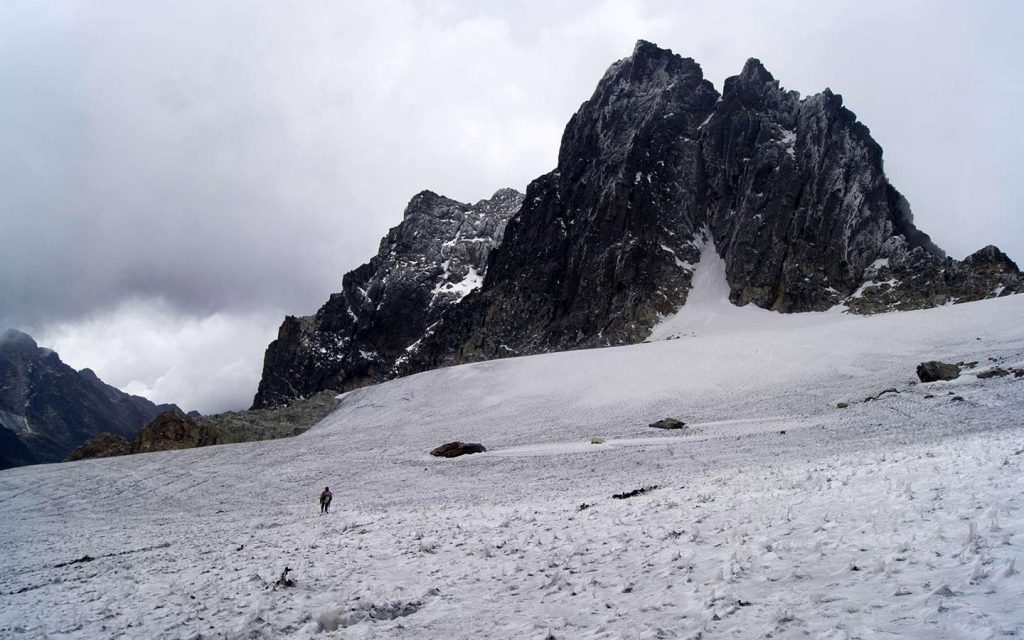
The diverse heavily snowcapped peaks are one of the few pristine and spectacular landscape that comprises of Waterfalls, Hot Springs, Blue Crique Lakes, Snow Clad Peaks and Stratified Vegetation which is an attraction not only for visitors but also creates a potential for Research as well as a resource for the communities.
The park is astonishingly home to 18 species of Mammals, 217 species of birds, 9 species of reptiles and 6 species of Amphibian. Elephants, Buffaloes, Giant Forest Hogs, Bush Bucks, Chimpanzees and Leopards are present but rarely seen. A great African safari wildlife collection.
The Rwenzori Mountains National Park also ahs primates such as the Black and White Colobus, the Blue Monkey may be seen. The park has some unique and rare animal species like the Three Horned Chameleon, the Rwenzori Colobus, Rwenzori Turaco and Rwenzori Double-Collared Sunbird.
The park is also a Cultural Heritage for the neighbouring communities, 18 Sacred Sites have been identified, mapped and protected as Worship Areas.
ACTIVITIES IN RWENZORI MOUNTAINS NATIONAL PARK
Visitors to the Rwenzori Mountains National Park can also take part in five major categories of activities; Trekking, Nature Walks, Site seeing, Cultural visits and Peak Climbing.
Nature and hiking walks in the Rwenzori Mountains
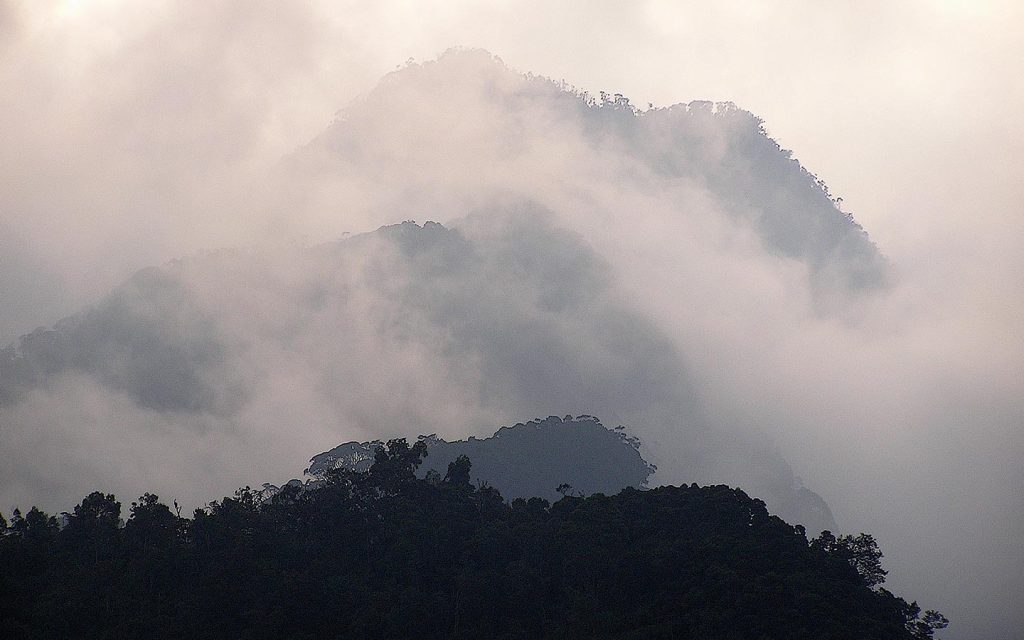
The Rwenzori’s are a world-class hiking and mountaineering destination, which were recently voted among the world’s best hiking places. The world heritage site is well known for its extraordinary flora and different vegetation zones. The park also gives an opportunity for nature walk trails in the central circuit zone. These trails also include; trails to Lake Mahooma and Buraco chimp forest. The walks through the communities of Kichamba to arrive at the Karangura ridge and the hike to Bundibugyo through Bwamba pass.
Mahoma Nature Trail
The Muhoma Nature trail allows park visitors to experience the Rwenzori Mountains destination in a one-to-three-day walk tour and it traverses the lower slopes of the ranges up to Lake Mahoma, where the walk connects with the Central Circuit Trail. This is a unique fourth trail and the second nature walk in the national park tucked in western Uganda along the Uganda-Congo border.
The other trails include the Central Circuit, run by Rwenzori Mountaineering Services (RMS); Kilembe, run by Rwenzori Trekking Services (RTS), and Kazingo Nature Walk trail, which has been the only trail open to all tour operators since the other trails are privately run.
The communities of Turaco view and Ruboni will also offer a guided forest walk of high lengths outside the park. The visitors will also follow the River Mubuku as well as the sight views of baker and portal peaks as they hike up to over 2,300m above sea level. Just on a clear day, it’s also possible to view the snow-capped Margherita peak which is a great spectacular sight. And along the way, you will keep your eyes to see the horned chameleons, squirrels, vervet monkeys as well as a variety of bird species.
The Bwamba Trail pass built-in 1938, was intended to create a link via Fort portal to a remote town of Bundibugyo. It is on this trail, that local people also follow the most direct route between these settlements close to 1,500m high over the steep north Rwenzori ridge commonly known as the Bwamba Pass. Upon reaching this spot, Abanya Rwenzori community tourism group will lead you through the hidden mountain villages to visit the Bamboo forest ranges. From this point, you’ll be able to enjoy superb views of the great western rift Valley.
Forest and Foothill Hiking
Inexperienced mountain climbers have an option of hiking on the mountain slopes and forest or taking part in activities like hand fishing along some of the streams on the mountain hills. While in the forest, look out for the three-horned Rwenzori chameleon. This rare reptile is only found in Uganda, Rwanda and DR Congo. The male chameleon has 3 horns while the female has none.
Trekking in the Rwenzori Mountains
There are treks available to suit all levels and needs, from one-day jaunts in the forest to 10-day treks with technical climbs. The six-day treks are the most popular. Mountain climbing expeditions can ably use a chain of basic huts and campsites Enroute to ascend the Mountain from a vintage spot at Kilembe and Nyakalengija. The peaks are accessed via two routes: the Kilembe Trail and the long-standing Central Circuit that starts from Nyakalengija village. For those short, on-time there’s also the two- to three-day Muhoma Nature Trail, a 28km circuit set up by UWA in 2012 that’s a shortened version of the Central Circuit.
The Kilembe Trail
This is the recent opened Kilembe trail that rises in the southern slopes of the Rwenzori from a trailhead at the Kilembe just near the town of Kasese. Kilembe Trail is a hit among trekkers. Organized through Rwenzori Trekking Services, this company has both lifted the standards and breathed new energy into trekking in the Rwenzori’s. While treks to the main peaks are further away compared with the Nyakalengija route, it receives glowing reviews for its professional guides, quality equipment and safety measures, as well as comfortable mountain huts along the route.
This route is along the Nyamwamba Valley that goes through the glacier lakes and the spectacular viewpoints before joining the central circuit at Lake Kitandara. The standard route also shows Mount Baker has got scenery that makes shorter treks. The tours can be booked through Rwenzori Mountaineering services and Rwenzori trekking services.
The central circuit Trail
This is so challenging and a seven-day climb will give you a rounded tour of the high Rwenzori. Just from the trailhead at the Mihunga, the route rises the Bujuku Valley via Nyabitaba for the acclimatization before arriving at the peaks. The clients will join the central circuit after the Bujuku that passes the Scott Elliot as well as fresh field that goes through the Mubuku Valley. The climbers can also scale the snow peaks and many might consider the extraordinary scenery which is a plenty reward for the efforts.
From Nyakalengija
The Central Circuit that starts from Nyakalengija village is arranged through Rwenzori Mountaineering Services. Long-established RMS has received some negative feedback for using dodgy equipment and failing to maintain huts. A range of tailor-made treks is offered, from technical climbs to leisurely strolls in the forested foothills. The most popular is the five-day trek to Weismann’s Peak. It’s at times steep and strenuous; there are no ropes or climbing equipment involved. During April to May and September to October, it’s common to experience snowfalls.
Peak Climbing
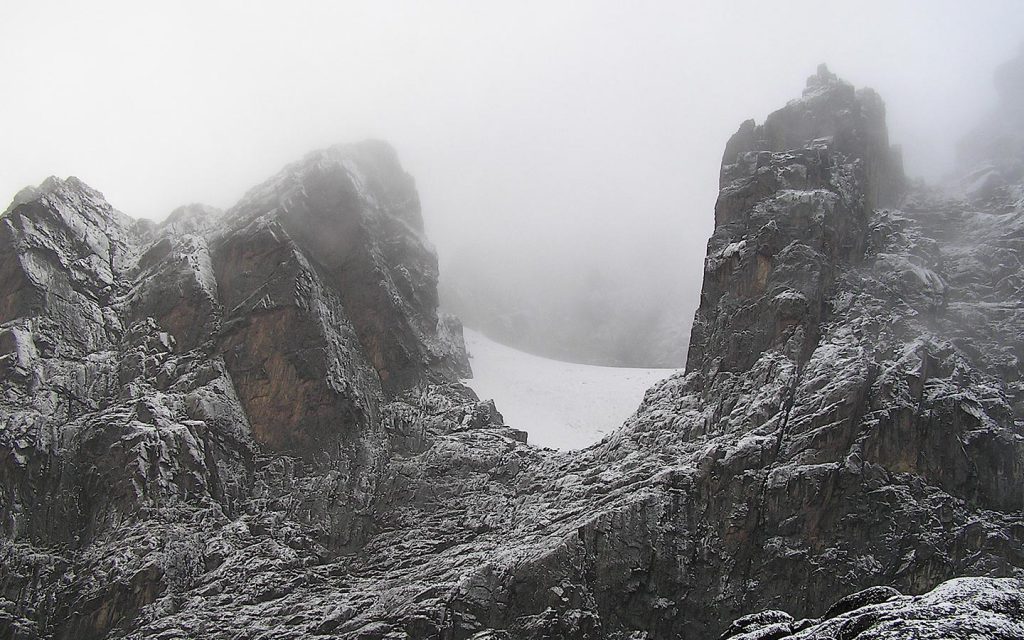
The 6-day loop trail is a tough but rewarding Hike taking all vegetation Zones and the Glacier Peaks. There are ascents to major peaks within the Rwenzori Ranges along both Routes. The ascents to Margherita (5,109m) on Mountain Stanley, Vittorio Emmanuelle (4,889m) on Mountain Speke and Edward (4.842m) on Mountain Baker. These hikes offer a commanding panoramic view over other peaks within the Rwenzori Mountains National Park ranges. However, only experienced mountaineers are advised to attempt the high peaks within the Rwenzori ranges.
The Cultural encounters in the Rwenzori Mountains
The Rwenzori Mountains National Park offers opportunities for cultural experiences with one of the local tribes living at the foot of the mountains. Tourists can go and visit the village of Ruboni to learn about the daily lifestyle and history of the Bakonzo tribe. The Rwenzori Mountains National Park is habitat to Bamba, Babwiisi and Vanoma, Basongora, Bakonjo, Banyabindi and Bakonzo.
(I) Bamba, Babwiisi, and Vanoma cultural sects
These ethnic groups live together in the Bundibugyo District which is situated on the Rwenzori Mountains’ western slopes. You can also find them in the Butalinga District in DRC. The most commonly used dialect is Lubwiisi, a Bantu language close to Runyoro and Runyankole dialects. Most popular cultural sites within these areas are Bujumila (for Bangulu clan), Kiroghoji Waterfalls (for Basu clan), and Semuliki Hot Springs (for Bamaaga clan). Interestingly, the three cultural communities’ practice “Kubhemba”, a ritual where they prepare and serve sumptuous feasts to their ancestors, appeasing them in celebration or calamity times.
(II) Basongora cultural sect
The Basongora cultural sect is the second-largest tribe in Kasese District. These people mainly leave within the lowlands of the Rwenzori Mountains and they are concentrated in areas of Ibuga, Muhokya, Hima, Katwe, Nyakatonzi, and Hamukungu.
Most Basongora cultural sect regions are surrounded by fresh montane water bodies, which manifests the fact that the Basongora communities are mainly pastoralists, thus getting attracted to staying in places endowed with a constant supply of water for their livestock. However, modernity has made them embark on farming, too, but only for subsistence. Among the Basongora, the lusongora, their local language is closely related to the Runyakitara and Rutooro dialects.
(III) Bakonjo cultural sect
These are a majority ethnic group in present-day Kasese district. They speak Lukonjo, which is divided into pidgin Lunyarwenzuru and Lukonjo. They believe Kithasamba, their god, resides in the snow-capped peaks of the Rwenzori Mountains. Their popular cultural sites include Isaya Mukirane’s mausoleum, which is located in the Ihandiro Sub-County.
In early days, the Bakonjo normally occupied the Rwenzori slopes, however, due to inter-clan tribal wars, they sought refuge in the high mountain ranges and realized the Rwenzori Mountains were a reliable protective zone against any tribal attacks. However, some of the sect members descended to settle in the Rwenzori Mountain lowlands areas.
(IV) Banyabindi cultural sect
The Banyabindi is regarded as a minority ethnic group in Kasese region and mostly settle in the Rwenzori Mountains plains and lowlands. Banyabindi majorly occupies areas around Mukunyu, Bugoye, Muhokya, and Kinyamaseke. However, their dialect of Lunyabindi is a mix of Runyoro-Rutooro. This cultural sect practices mainly mixed farming, grazing short-horned cattle and growing crops such as bananas, beans, potatoes, cassava, and millet.
(V) Bakonzo cultural sect
This group, with Lukonzo as their local dialect, occupies Ruboni and Mihunga, peaceful farming villages situated along the Rwenzori’s’ foothills. Their day-to-day activities mainly comprise tending to livestock and growing crops. You’ll also come across blacksmiths, traditional healers, storytellers, and basket weavers in the Ruboni community.
The Ruboni Community Camp
You can discover the passive farming village of Ruboni which is home to over 2000 Bakonzo found in the foothills of the Rwenzori’s. You can as well walk with the villagers as they show their daily activities from caring for their animals and crops to organising meals with the freshest ingredients.
You can as well meet the blacksmith, basket weavers, the traditional healers and well as the storytellers where you will also enjoy the beautiful dance performance that is followed by the lively drumming.
The guide will also lead you along the rocky Mubuku River. The Ruboni word also means clear clean water in the local language of Lukonzo, and you will also follow the crystal-clear stream that passes through as the villagers carry crops and wood. More so as the trail goes upwards, the guide will show many colourful native birds like the tiny sunbirds, the Rwenzori Turaco, as well as the Cinnamon, chested Bee-eaters. There are also squirrels, vervet monkeys as well as the chameleons.
The Rwenzori Turaco View campsite
This is a small village of Mihunga that faces towards the rocky snow-capped peaks of the Rwenzori Mountains. Bakonzo tribe have lived here for over 300 years with no running water and electricity and this community has gotten used to the way of life to the climate and the steep green hillsides of the Rwenzori’s. There is also the Mihunga community tourism group, the turaco views that take the guests on to the cultural tour of the village. This also includes a demonstration by the traditional healer, the herb concoctions that are believed to cure many of the ailments. You can also have a trip to the village school, the crafts demonstration as well as a lively dance performance.
The visitors here can walk with the local guide through the nearby forest. These can get lucky and view some birds including; the coloured turacos in the forest canopy. The guide will be able to point out many other species like the bee-eaters, black and white colobus monkeys as well as the sunbirds.
The Bulemba Ihandiro Cultural Trail
This is a 6 to 7-hour trail movement through the holly valley and many other sites of great cultural significance to the Bakonzo tribe. The community guide will introduce you to the traditional healer, as he explains his powers, commonly known as “Muhima” as well as to the local blacksmith, who will reveal the spiritual significance of the traditional Bakonzo stool. The other skills to be enjoyed include; basket weaving and fire-making as they are demonstrated along the route.
African safari visitors learn how to make fire locally and weave baskets. The Bulemba-Ihandiro Cultural Trail also takes visitors to the Bakonzo traditional Museum. The local museum has a collection of traditional items of cultural and historical importance to the Bakonzo (Rwenzururu) including art pieces and locally made dresses.
The trail will take you to Kamusonge River whose waters are also believed to be quick and sweet to reduce the thirst. There is also a break in a hut in order to enjoy the fantastic mountain views as well as shelter from the equatorial sun, before boarding the final hour-long walk to the museum that is thatched in the traditional Konzo style. Just on the displays, there are the implements that are used during the Rwenzururu struggle, traditional dress and the items of historical and the cultural importance towards the people of the Rwenzori’s.
BIRDING in Rwenzori
UNESCO labelled the Rwenzori area a key Birding Area. There are also birding opportunities in Rwenzori and are mostly found in montane forest, some of the few species are found in the unreceptive world of the high Rwenzori. The park and its mountains support several species and some of the bird species include; the bee-eaters, sunbirds, Robins, Barbets and these are some of 217 species found in Rwenzori Mountain National park. Other species include the African Long-eared Owl, Archers’ Robin-chat, Barbets, Barred Long-tailed Cuckoo, Blue-headed Sunbird, Cinnamon-chested Bee-eater, Collared Apalis, Crimson wings, Dusky and Shelley’s Crimson wing, Dwarf Honeyguide, Evergreen Forest and Bamboo Warblers, Flycatchers, Golden-winged sunbirds, Sunbird, Grauer’s Cuckoo-shrike, Greenbuls.
Some of the bird species include; the bee-eaters, sunbirds, Robins, Barbets and these are some of 217 species found in Rwenzori Mountain National park. The other bird species to view here include; the long-eared Owl, Rwenzori Turaco and higher in the slopes, you can view species including; beared Vultures, swifts as well as the black Eagles that may be circled for the prey.
ACCOMMODATION IN RWENZORI N.P
Mihunga Safari Lodge: This hotel was opened to the public in 2010 in Mihunga village near Nyakalenjija by the Rwenzori Mountaineering Services (RMS). The lodge has wooden accommodation facilities that are self-contained with a restaurant that serves Ugandan and international food.
Rwenzori Turaco View Campsite: This is a community-run and locally owned budget hotel with a camping site and grass thatched rooms in Mihunga village. The facility has a bar and restaurant that prepares Ugandan food but also with the tastes of international visitors in mind.
Ihamba Lakeside Safari Lodge: This Mid-range hotel is located near Queen Elizabeth National Park on the shores of Lake George. It is close to the Kahendero fishing village that overlooks the Rwenzori Mountain ranges. The lodge has 6 self-contained cottages and offers facilities like laundry, housekeeping, parking space, fire equipment and a swimming pool.
Rwenzori Backpackers: This is a budget facility used mainly by visitors who have come to hike the mountains using the Kilembe Trail. The lodge has comfortable bedding, hot showers, a bar and restaurant.
Sandton Hotel Kasese: This hotel is built along the Rwenzori Road in the middle of Kasese town. The hotel receives both local and international clients and has a large room for conferences and meeting. The environment around the hotel is quiet and serene with beautiful gardens.
Custom Uganda Safaris
Can be adjusted to fit your travel needs. All inclusive African Safaris
Uganda Gorillas & Chimp Habituation Safari
Track Uganda’s Gorillas and take on the habituation of chimpanzee in Kibale forest
5 Days, 4 Nights
Uganda Gorilla & Golden Monkey Tracking Tour
The Golden monkey tracking experience in Mgahinga National Park.
4 Days, 3 Nights
Uganda Primate Tracking & Game Safari
Track the primates of Uganda, gorillas & chimps and also take a wildlife game drive.
8 Days, 7 Nights
Exclusive All Around Uganda Safari & Adventure
A 25 Day African safari around the pearl of Africa, Uganda, from Savanna to rainforest jungle
25 Days, 24 Nights
Uganda Gorilla Habituation and Lake Bunyonyi Tour
Far better than 60 minutes of gorilla tracking, Gorilla Habituation Experience gives you more.
4 Days, 3 Nights
Uganda Double Gorilla Trekking Tour
You’ll be tracking Uganda’s Mountain Gorillas in Bwindi twice, if you can handle the excitement.
4 Days, 3 Nights
Uganda Double Gorilla Habituation Experience Tour
Go on an expeditions with researchers in the Bwindi jungles to Habituation a family of gorillas.
4 Days, 3 Nights
The Ultimate Uganda Safari Experience
Visit the Nile river source, track gorillas and take classic savanna game drive safaris.

